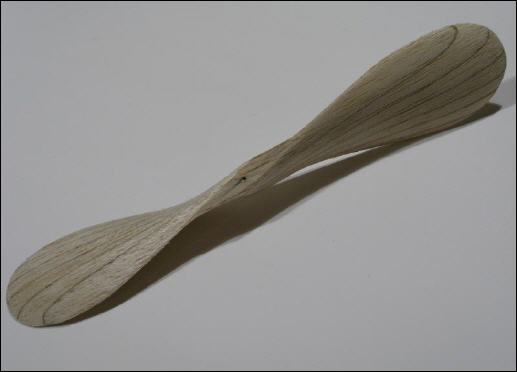Propellers


Dimensions of the propeller
To improve the performance of your model it is best to cut your own prop. On these pages plans are given of several proven designs.
In choosing the right prop for your model, two factors are of importance: diameter and pitch.
For most planes a diameter of about 1/3 of the span is a good choice, but for models which are difficult to trim a diameter of about 1/4 of the span is a better choice.
The pitch determines the climb of the model: a low pitch gives a rapid climb, a high pitch gives a slow climb. The pitch also influences the duration of the motor run; a high pitch gives a longer motor run. For flying in a limited space, such as in flying indoors, a high pitch is the best choice. But beware, a higher pitch makes a model more difficult to trim.
What is a high pitch? It is best to look at the ratio between diameter and pitch: P/D. A P/D of 1 to 1.2 is low, 1.3 to 1.4 is medium and 1.5 and upwards is high pitch.
All plastic props have a low pitch and are more suitable for outdoor flying.
To find the right prop from these drawings it is best to look at the P/D first. You can increase or decrease the diameter by enlarging or shrinking the dimensions with a certain factor. Scaling a prop does not influence the P/D ratio.
The width of the prop blade is also of influence. Generally a long and thin prop blade has a higher efficiency than a short and wide prop blade. Therefore competition models (not scale) often have long and narrow prop blades of about 8% to 9% of the diameter. This is often not practical for scale models, especially if they are meant to take off and land on their wheels. It is possible to reduce the diameter of the prop and compensate by increasing the width of the blade. For scale models a blade width of 15% to 20% of the diameter is used.
|
low pitch P/D of 1 to 1,2 |
medium pitch P/D of 1,2 to 1,4 |
high pitch P/D of 1,4 to 2 |
Pitch calculation
Do you want to calculate the pitch or P/D of an unknown prop block? You can use these formulas:
Relative pitch at the the tip of the prop
P/D = (3,14 x tip-thickness)/(tip-width)
Pitch
this formula can be used for each part of the prop block, not just the tip:
Pitch = (3,14 x diameter x thickness)/(width)
Handy links
You can find more prop carving tips on:
The Idiot's Guide to Prop Carving v2.02
Don Ross (1953)
Matt Keveney, prop carving tutorial
Indoor rubber propellers for scale and sport models
